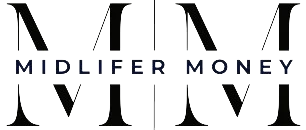Dealing with debt can be overwhelming, especially if you’re not familiar with the terminology used in the financial world. To help you navigate through your debt journey, we’ve compiled a list of 10 essential debt terms that everyone should know. Understanding these terms will empower you to make informed decisions and take control of your financial situation.
1. Principal
The principal refers to the original amount of money borrowed. It is the initial sum that you owe to a lender before any interest or fees are added.
2. Interest Rate
The interest rate is the percentage charged by a lender for borrowing money. It is the cost of borrowing and is typically expressed as an annual percentage rate (APR). The interest rate determines how much extra you will have to pay back on top of the principal.
3. Minimum Payment
The minimum payment is the smallest amount you are required to pay each month to keep your account in good standing. It is usually a percentage of your outstanding balance or a fixed dollar amount set by the lender.
4. Credit Score
Your credit score is a numerical representation of your creditworthiness. It is a measure of how likely you are to repay your debts based on your credit history. Lenders use your credit score to assess the risk of lending you money.
5. Debt-to-Income Ratio
Your debt-to-income ratio (DTI) is a financial metric that compares your monthly debt payments to your gross monthly income. It helps lenders determine your ability to manage additional debt and is an important factor in loan approval.
6. Collateral
Collateral is an asset that you pledge to a lender as security for a loan. If you fail to repay the loan, the lender has the right to seize the collateral to recover their losses. Common examples of collateral include homes for mortgages and vehicles for auto loans.
7. Secured Debt
Secured debt is a type of debt that is backed by collateral. If you default on the loan, the lender can seize the collateral to satisfy the debt. Examples of secured debts include mortgages and auto loans.
8. Unsecured Debt
Unsecured debt is not backed by collateral. Lenders rely on your creditworthiness and ability to repay the debt when extending unsecured loans. Credit cards and personal loans are common examples of unsecured debt.
9. Debt Consolidation
Debt consolidation involves combining multiple debts into a single loan or payment. This can simplify your finances and potentially lower your interest rate, making it easier to manage your debt.
10. Bankruptcy
Bankruptcy is a legal process that allows individuals or businesses to seek relief from overwhelming debt. It provides a fresh start by eliminating or reorganizing debts under the supervision of a bankruptcy court.
By familiarizing yourself with these 10 debt terms, you’ll be better equipped to understand and manage your debt effectively. Remember, knowledge is power, and taking control of your financial well-being starts with understanding the language of debt.

